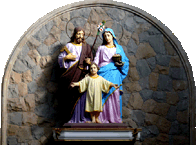|
The Drumstick Tree is a middle sized deciduous perennial tree that grows upto 9 meters (30 feet).
Although it is native to Asia but is now neutralized in tropical areas of America and Africa.
It acquires its name from the shape of its pods that resemble drumsticks. The drumstick pods mature at the length of 12 inches. A bloom of small white flowers, with a honey scent, are seen on the trees.
The oil extracted from the seeds is an essential oil called Ben oil. It is used in cosmetics due to its scent, and moisturizing and cleansing properties. It can also be used to reduce aging, prevent heart diseases and manage diabetes.
It is also called the miracle tree due to its wide range of uses including food, medication and water purification. Fruits, young leaves and flowers are used as a vegetable in Indian cuisine, since it has rich nutritional value.
The young leaves of the drumstick tree can also be eaten raw, they are high in iron, potassium and vitamin C. In some countries, malnourished children and pregnant mothers are treated with powdered drumstick leaf.
All parts of the drumstick tree can be used for a variety of medicinal purposes due to its high levels of anti-oxidant and anti-inflammatory properties, blood pressure reduction capacity, potential to improve heamoglobin levels and halt the growth of cancer cells within the body. Therefore, it is used by many medical systems, such as Ayurveda, Folk medicine, Sowa-Rigpa, Unani and Siddha to treat a diverse range of diseases.
IMPORTANT: The information on this website has been compiled from reliable sources, such as reference books. It is not a substitute for medical advice or treatment. Readers should always consult their physician before using or consuming a plant for medicinal purposes.
--- Click here for information about other trees on Holy Family Church campus ---
|
